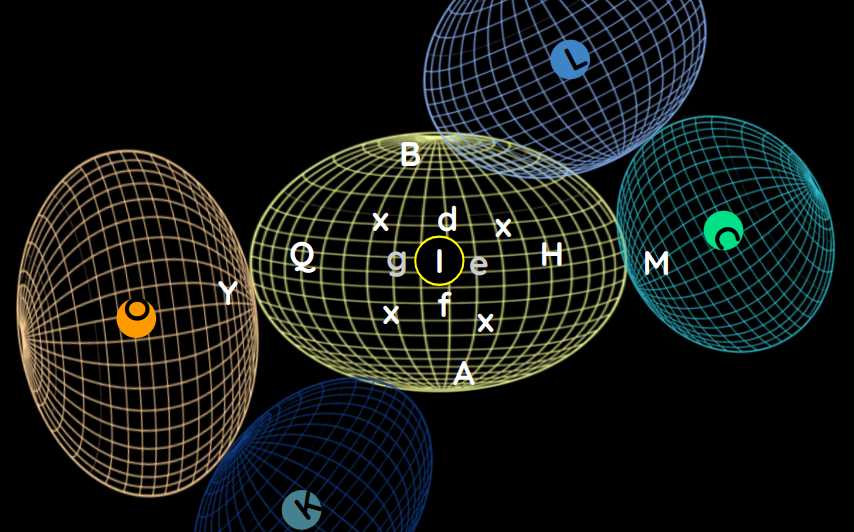The Sudden Appearance of Stars
Table of Contents
Superphysics Note
109. The presence of intersecting channels in the spots
The remaining air-aether contained in space I, while rotating around the axis fd, always tries to move away from it.

Therefore, it initially formed and always preserves certain small channels in the spot defg, which intersect the primary ones and allow some of this matter to flow out.
This is because some amount of the matter enters along with the virtual photons through the primary channels.
Since all parts of the spot adhere to each other, the circumference defg cannot become larger or smaller at different times.
Consequently, the quantity of the fire-aether’s matter contained in star I must remain constant.
110. Why light from a star can hardly pass through a spot
Therefore, the force that constitutes light can be either entirely absent in it or very weak.
As its fire-aether rotates around the axis fd, any force that it exerts to move away from that axis is broken within the spot and does not reach the air-aether globules.
Similarly, the force exerted by its virtual photons moving straight from one pole to the other cannot accomplish anything because:
- mainly, those particles coming from one pole do not push these globules more in one direction than those coming from the opposite pole push them in the other direction
- these particles are very small compared to the air-aether globules that they strike
- these particles move slower than the rest of the fire-aether
111. Description of a star appearing suddenly
The air-aether in the entire vortex surrounding Star I can retain its forces for some time, even though these forces may not be enough to produce the sensation of light in our eyes.
This vortex may dominate over other nearby vortices by pressing them more strongly than it is pressed by them.
Consequently, Star I increases, except that the spot defg surrounding it prevents this.
Let the circumference of Vortex I be AYBM.
Its globules near this circumference have the same force to proceed beyond it towards other surrounding vortices, just as the globules of those other vortices have to proceed towards I. This is the only reason why its circumference ends here rather than elsewhere.
The air-aether of Vortex O tending towards Vortex I can decrease. This can happen for various reasons, such as:
- when air-aether transferring to other vortices
- many spots forming around the star in O
- and so on
When this happens, the air-aether globules of Vortex I at circumference Y must proceed beyond it towards P.
All the other globules between I and Y also tend in this direction. And so the space containing Star I would increase if the spot defg did not limit it.
But this spot prevents it from increasing. And so, the air-aether globules close to it will leave slightly larger intervals around them than usual, containing more of the fire-aether. As long as it is dispersed in these intervals, this fire-aether cannot have much force.
However, if the fire-aether exiting through the spot’s pores and striking these globules or for any other reason, separate some of these globules from the surface of the spot, that fire-aether immediately filling the intermediate space will have enough force to separate other globules close to these from the same surface.
The more globules it separates, the more force it will acquire.
Thus, in a very short time, almost instantaneously, it will spread over the entire surface. There it rotates in the same way as the matter within the spot.
It will push the surrounding air-aether globules with no less force than Star I would if no spot enveloped and hindered its action. Hence, it will suddenly shine with great light.